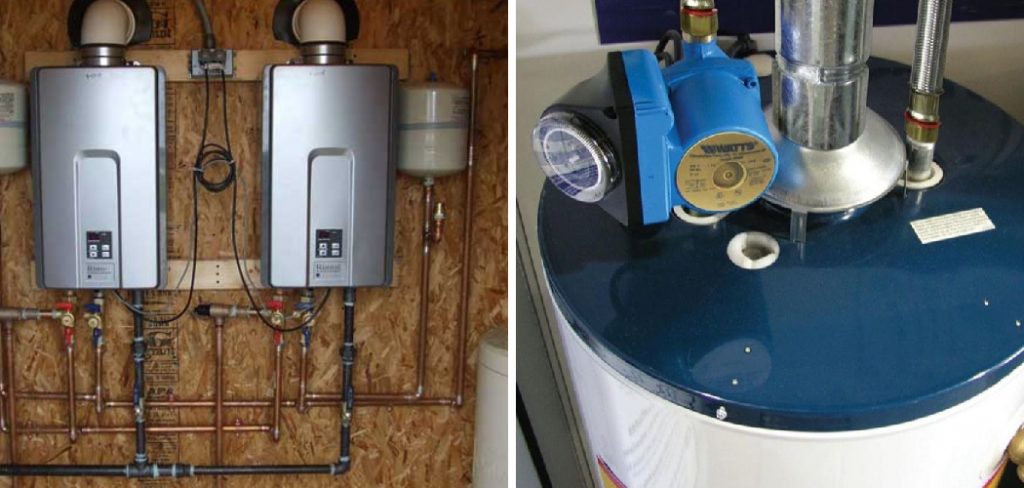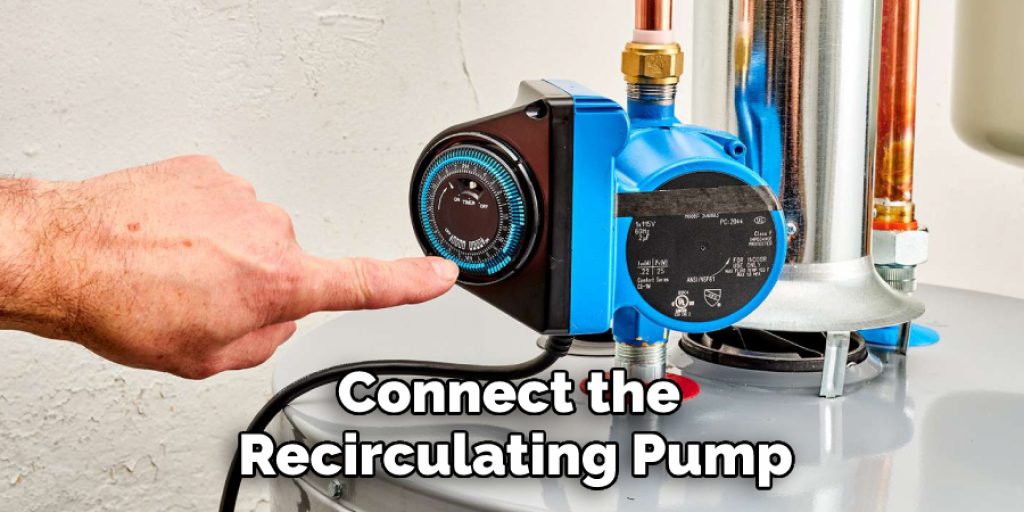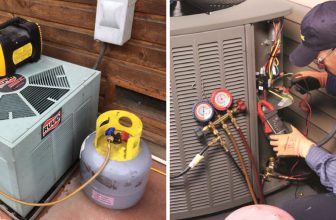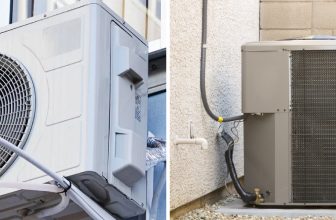How to Install Recirculating Pump on Tankless Water Heater
Are you considering installing a recirculating pump on your tankless water heater? This is an important step in ensuring that you get hot water when and where you need it. With a recirculating pump, there’s no need to wait for the hot water to reach all parts of your house – it comes out of every faucet instantly!

In this blog post, we’ll provide simple steps on how to install recirculating pump on tankless water heater to help walk you through the process so that by the end of it, your home will be equipped with instant hot water. Read on to learn how easy it can be to install a recirculating pump on your tankless water heater.
What is a Recirculating Pump?
A recirculating pump is a device that helps to ensure hot water is available at all times. By circulating the water from your tankless water heater through hot and cold pipes, it ensures hot water will always be readily available in any part of your home when you need it.
You also don’t need to wait for the hot water to travel all the way from the water heater to your faucet – it can arrive in an instant. It is a great way to save water and get hot water whenever you need it.
Can You Install Recirculating Pump on Tankless Water Heater?
Yes, you can install a recirculating pump on your tankless water heater. This is an important part of having hot water available in all parts of your home without having to wait for the hot water to travel from the water heater. It is also a great way to save water, as you don’t need to run the tap for long periods of time to get hot water.
Materials You’ll Need
- Recirculating Pump
- Pipes and Fittings
- Teflon Tape
- Plumber’s Tape
10 Steps on How to Install Recirculating Pump on Tankless Water Heater
Step 1: Turn Off the Power
Turn off the power to your Tankless Water Heater . Turn it off at the circuit breaker, and make sure that it is completely disconnected from any power sources. If you have a gas-powered heater, make sure to turn off the gas as well.
Step 2: Prepare the Pipes and Fittings
Using your pipes and fittings, connect the recirculating pump to the line coming from the tankless water heater. Make sure that all of the connections are secure and tight. Any loose connections can cause a leak.

Step 3: Seal the Connections
Wrap each of the connections with Teflon tape, and then use the plumber’s tape to ensure that everything is sealed properly. This will help prevent any leaks or other issues from occurring. Seal each of the connections securely.
Step 4: Turn on the Power and Gas
Turn the power and gas back on to your tankless water heater. Let the pump run for a few minutes to make sure that it is working properly before continuing. The pump should be running at full power.
Step 5: Test the Recirculating Pump
Test the recirculating pump by turning on one of your faucets in another part of your home. The hot water should come out instantly, and you won’t need to wait for it to travel from the water heater. If everything is working properly, you can turn off the faucet and move on to the next step.
Step 6: Connect the Outlet Line
Connect the outlet line from your recirculating pump to the hot water line in another part of your home. Make sure that all of the connections are secure and tight before moving on.
Step 7: Connect the Return Line
Next, connect the return line from your recirculating pump to the cold water line in another part of your home. Make sure that all of the connections are secure and tight before moving on. The connections should be sealed properly with Teflon tape and the plumber’s tape.
Step 8: Test the Connection
Turn on one of your faucets in another part of your home to test the connection. The hot water should come out instantly, and you won’t need to wait for it to travel from the water heater. If everything is working properly, you can turn off the faucet and move on to the next step.

Step 9: Connect the Pump to a Power Source
Connect your recirculating pump to a power source using an electrical cord or another wiring as necessary. Make sure that all of the connections are secure and tight before turning on the power.
Step 10: Turn on the Power
Turn on the power to your recirculating pump and let it run for a few minutes. Make sure that everything is working properly before turning off the power. Once you have verified that everything is working correctly, you can turn off the power and enjoy hot water in all parts of your home without having to wait for it to travel from the water heater.
You have successfully installed a recirculating pump on your tankless water heater. Now you can enjoy hot water in all parts of your home without having to wait for it to travel from the water heater. Enjoy!

8 Maintenance Tips
- Before installing a recirculating pump on your tankless water heater, check with the manufacturer for any specific instructions. The instruction manual should provide detailed steps on how to install the pump.
- Make sure the recirculating pump is properly sized for your tankless water heater unit. This will ensure that it can handle the flow rate of hot water that your system requires.
- Make sure you have all of the necessary tools and materials before starting the installation, including the recirculating pump, appropriate fittings and tubing, a submersible well pump, and any other components.
- Install the recirculating pump in a convenient location near the tankless water heater unit. If necessary, consult an expert to ensure proper installation of all components. Proper installation is essential for the pump to work efficiently.
- If your recirculating pump is designed to be installed directly into the water line, make sure you read and follow all installation instructions carefully.
- Check that all connections are secure before turning on the recirculating pump. Make sure all fittings are properly sealed, and there are no leaks.
- Follow all maintenance instructions provided by the manufacturer, including cleaning and inspecting components on a regular basis. This will help ensure that your recirculating pump remains in good working condition and continues to provide hot water at an optimal flow rate.
- If you experience any issues with your recirculating pump or tankless water heater, contact a qualified technician for further assistance. They can troubleshoot any problems and make necessary repairs or adjustments as needed.
By following the above tips, you can ensure that your recirculating pump is properly installed and maintained on your tankless water heater unit. This will help keep your hot water system running efficiently and cost-effectively for many years to come.
Frequently Asked Questions
What Are the Benefits?
A recirculating pump on your tankless water heater can increase its efficiency and save energy by providing hot water more quickly. Additionally, this type of system helps conserve water since it recycles the same water instead of wasting it as it runs down the drain. It also reduces the number of times you have to wait for hot water each time you turn on a faucet.
What Are Some Common Issues?

If not installed and maintained properly, a recirculating pump can lead to problems such as low flow rate, excessive noise, or leaking. If you experience any of these issues with your recirculating pump, contact a qualified technician for assistance. Look for technicians who are certified and experienced in installing tankless water heaters.
What Should I Do If My Recirculating Pump is Not Working Properly?
If your recirculating pump is not working properly, contact an expert to troubleshoot and make necessary repairs or adjustments. They can also check to make sure all parts are properly sized and connected. Additionally, they can provide advice on how to properly maintain your recirculating pump for optimal performance.
Conclusion
Now that you have a better understanding of how to install a recirculating pump on your tankless water heater, you are well-equipped to tackle this project yourself. If, however, you run into difficulties or simply do not feel comfortable doing the job—or if your water heater is still under warranty—it’s best to contact a plumber or local handyman. Remember that installing a recirculating pump requires knowledge and skills, not every homeowner has.
Consider researching the system further so you can ask any questions the plumber may have about your hot water needs. You may also consider purchasing a remote control for your recirculating pump to help manage your energy costs throughout the day, as well as automatically cleaning the system regularly to avoid build-up and blockages.
Lastly, make sure to keep track of all records and technical manuals in case any repairs are needed in an emergency situation down the road. Doing some research and preparing ahead of time will help ensure a successful installation process, and have this post on how to install recirculating pump on tankless water heater as a guide.




